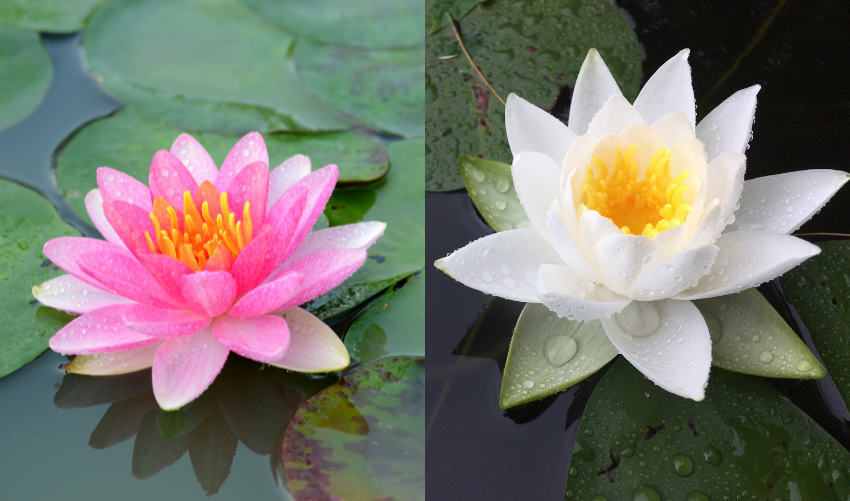Have you ever wondered what each hue of the lotus signifies? Its colors carry deep meanings that can resonate with your emotions and experiences.
Let’s explore what each lotus flower color represents and how it can enrich your life.
The Sacred White Lotus Flower: Purity And Enlightenment
In this guide, we will explore the rich symbolism of the white lotus in various traditions, its role in spiritual awakening, and how it can be used in meditation and reflection.
Symbolism Across Cultures: From Buddhism To Hinduism
The white lotus has significant meaning in many Eastern traditions, particularly in Buddhism and Hinduism. Each culture sees the flower as a symbol of purity and spiritual growth.
- Buddhism: The white lotus represents spiritual purity. It symbolizes the journey of the soul towards enlightenment.
- Hinduism: In Hinduism, the white lotus is linked to several gods and goddesses. It signifies divine beauty and purity.
In both traditions, the white lotus rises from muddy waters, symbolizing rebirth and the potential for spiritual growth.
The White Lotus And Spiritual Awakening
The white lotus symbolizes the journey from ignorance to enlightenment. It teaches that spiritual awakening is possible, no matter how deep the struggles.
- Spiritual Growth: Just like the lotus, we can grow through adversity.
- Inner Peace: The white lotus inspires a sense of calm and clarity.
Many spiritual teachers use the lotus as a symbol of awakening. They emphasize that true enlightenment comes from within. The white lotus encourages people to connect with their inner selves and find peace.
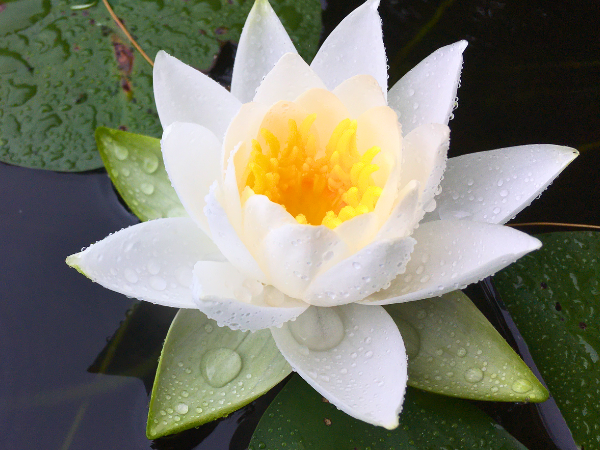
Using White Lotus In Meditation And Reflection
In meditation, the white lotus serves as a powerful tool for reflection. It helps individuals focus on their spiritual goals and intentions.
- Visualization: Picture a white lotus during meditation. Imagine it opening up, symbolizing your own growth.
- Affirmations: Use phrases like “I am pure” or “I seek enlightenment” while meditating.
Incorporating the white lotus into spiritual rituals can deepen one’s practice. It can enhance feelings of peace and divine connection.
The Enigmatic Blue Lotus Flower: Spirituality And Transformation
The blue lotus is often linked with rebirth, wisdom, and enlightenment. Understanding the significance of this flower reveals its role in ancient practices and modern spirituality.
Ancient Egyptian Significance: Rituals And Symbolism
The blue lotus flower is revered in Egypt as a sacred plant. It represents rebirth, wisdom, and the sun god Ra.
Ancient Egyptians associated this flower with the cycle of life and death. They believed it had the power to connect the earthly realm with the divine.
- Used in religious ceremonies
- Symbol of the sun and creation
- Represented resurrection and purity
In ancient texts, the blue lotus appears frequently. It served as a powerful symbol of cosmic energy and transformation.
Egyptians depicted the blue lotus in temple art and ancient stories. This further solidified its importance as a symbol of transcendence and enlightenment.
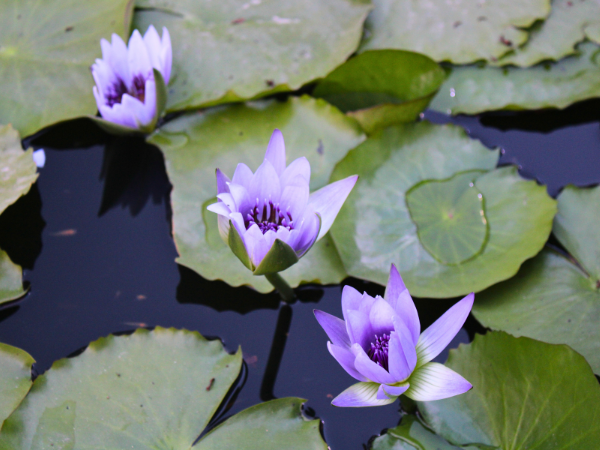
The Blue Lotus And Inner Peace
The blue lotus encourages serenity and control over desires. Its calming presence is linked with deep meditation and mental clarity. This flower can help individuals find peace amidst chaos.
- Facilitates meditation
- Enhances mental clarity
- Promotes emotional balance
In many cultures, the blue lotus is used in practices aimed at achieving mindfulness. It teaches individuals to focus on the present moment. This practice helps in managing stress and anxiety.
Exploring The Blue Lotus In Art And Mythology
The blue lotus appears in temple art and ancient stories as a symbol of cosmic energy. Artists have depicted it in various forms, highlighting its beauty and significance.
This flower often represents the journey towards enlightenment. Myths surrounding the blue lotus convey themes of creation and rebirth.
- Featured in paintings and sculptures
- Symbolizes the divine connection
- Represented in folklore and legends
In many artworks, the blue lotus stands out as a focal point. It captures the essence of transformation and spiritual awakening. Its presence in mythology often signifies hope and renewal.
The Beloved Pink Lotus Flower: Love And Compassion
Among lotus colors, the pink lotus stands out as a symbol of love and compassion. This hue radiates warmth and kindness, making it a beloved flower in many traditions.
The Pink Lotus And The Buddha
The pink lotus is closely associated with the Buddha himself. It often symbolizes divine love and sacred birth. In Buddhist art, the Buddha is often depicted sitting or standing on a pink lotus.
This imagery highlights the importance of the lotus in Buddhist teachings. It signifies purity and enlightenment rising from the mud of ignorance.
- Symbol of enlightenment and spiritual awakening
- Represents the journey from suffering to joy
- Embodies the ideals of compassion and kindness
In different cultures, the pink lotus also appears in various forms of art and architecture, emphasizing its spiritual importance.
Through its connection with the Buddha, the pink lotus encourages followers to cultivate love and compassion in their lives.
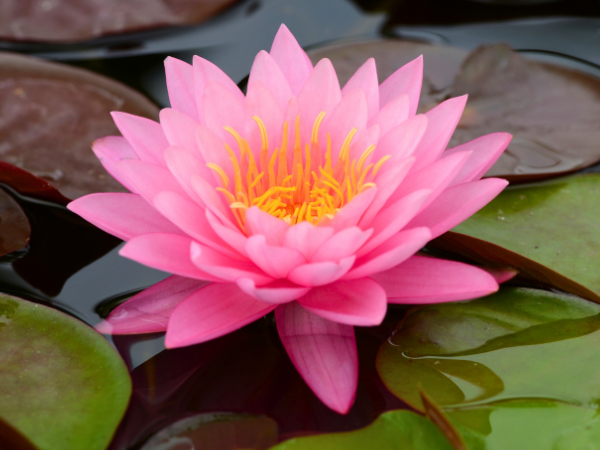
Representing The Heart: Love And Devotion
The pink lotus reflects emotional depth. It embodies affection and kindness in both spiritual and romantic contexts. This flower symbolizes heartfelt connections and devotion.
Here are some ways the pink lotus represents love:
- Sign of deep emotional bonds
- Represents unconditional love and acceptance
- Symbolizes devotion to loved ones
People often choose the pink lotus in their expressions of love. It serves as a reminder to cherish relationships. In romantic gestures, a pink lotus can express deep feelings and commitment.
Using Pink Lotus In Offerings And Expressions Of Affection
The pink lotus is common in religious offerings and meaningful gifts. It serves as a sign of reverence or heartfelt sentiment.
Here are some common uses of the pink lotus:
- Religious offerings in temples
- Gifts for loved ones during special occasions
- Decorations in spiritual ceremonies
In spiritual practices, the pink lotus helps create a serene atmosphere. Its presence encourages reflection and meditation. Many believe that offering a pink lotus can enhance spiritual connections.
The Rare Black Lotus Flower Meaning: Mystery And Potential
The black lotus is seen as rare and powerful, symbolizing the unknown – forbidden or hidden knowledge. This flower invites deep reflection on its meanings and interpretations across cultures.
Cultural Interpretations Of The Black Lotus
The black lotus holds various meanings in different cultures. Its rarity adds to its allure. Many view it as a representation of the mystical and the spiritual.
- Eastern Cultures: In some Asian cultures, the black lotus signifies enlightenment and spiritual awakening.
- Egyptian Mythology: It is linked to creation, representing the dark waters of chaos that give birth to life.
- Western Symbolism: In Western contexts, it often represents mystery, the unknown, and even taboo.
These interpretations reveal how the black lotus is more than just a flower. It embodies deep spiritual meanings that resonate across cultures.
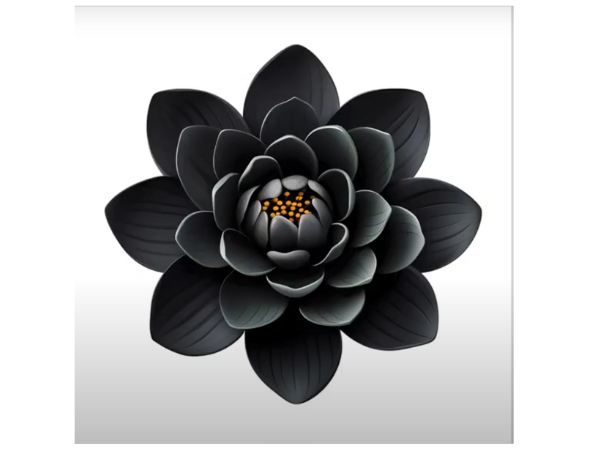
Symbolism Of Strength And Resilience
The black lotus symbolizes strength and resilience. It represents personal power and the ability to overcome adversity.
- Overcoming Challenges: The black lotus serves as a reminder that beauty can emerge from hardship.
- Inner Strength: It encourages individuals to tap into their inner power.
- Transformation: It symbolizes the journey of becoming, rising above struggles.
People often draw inspiration from the black lotus. It encourages them to face life’s challenges head-on. When they see this flower, they remember their strength.
The Black Lotus In Metaphor And Allegory
The black lotus appears in various forms of literature and art. It is often used in metaphor and allegory to convey deeper meanings. This flower embodies transformation, danger, and untapped potential.
- In Fiction: Characters may seek the black lotus to symbolize their quest for knowledge or power.
- In Folklore: Stories often depict it as a rare treasure, representing forbidden knowledge.
- In Poetry: The black lotus serves as a symbol of beauty that emerges from darkness.
These themes reflect the complexity of the human experience. The black lotus reminds us that life’s challenges can lead to profound transformation.
Other Notable Lotus Flower Colors And Their Significance
This section explores other notable Lotus flower colors and their significance, focusing on the vibrant red and radiant yellow hues.
The Vibrant Red Lotus: Passion And Energy
The red Lotus is a symbol of strong feelings. It is often linked with the heart and vitality. This color represents courage, strength, and emotional passion. The red Lotus stands out in any garden.
- Passion: Represents deep love and desire.
- Energy: Signifies vitality and enthusiasm.
- Courage: Encourages strength in challenging situations.
This flower is often seen in art and culture. Many people use the red Lotus to express their love and passion for life.
In many cultures, the red Lotus is a reminder to embrace our deepest feelings. It inspires us to live passionately and fearlessly.

The Radiant Yellow Lotus: Enlightenment And Creativity
The yellow Lotus shines with a bright and joyful energy. It represents clarity, new ideas, and spiritual curiosity. This flower encourages learning and innovation. Its beautiful color symbolizes a positive outlook on life.
- Enlightenment: Signifies spiritual awakening and insight.
- Creativity: Encourages artistic expression and new thoughts.
- Joy: Brings a sense of happiness and positivity.
People often associate the yellow Lotus with wisdom. It invites individuals to explore their creative sides and pursue knowledge.
Understanding Hybrid Lotus Color Meanings
Hybrid Lotus flowers mix colors, blending unique traits. These combinations offer deeper meanings. For instance, a pink and white hybrid represents divine love and purity combined.
- Pink and White: Divine love and purity.
- Blue and White: Wisdom and tranquility.
- Red and Yellow: Passion mixed with creativity.
These hybrids often symbolize complex emotions and experiences. They invite us to reflect on the connections between different aspects of life.

